This slow-cooked, fall-off-the-bone-soft, bolete mushroom-crusted rack of lamb will rock your world. Rack of lamb is an intimidating thing for most home cooks as they're expensive, and it doesn't help that they're small, touchy, and can overcook in just a few minutes either.
And, depending on how your rack is trimmed, and how the animals ate, the experience of eating can be different between people who prefer different things in the world of their roasted meat.
Slow roasting for the perfect texture
If the rack hasn't been frenched, it will still have the rib meat attached, and picky eaters that don't like any flubbery-ness might pick the eye out of the rack and leave the rest of the fatty rib meat on the plate. Wasteful heresy aside, it's a well-known reality dealing with children and some adults of lower-than-average culinary intelligence (picky eaters, come at me).
Slow cooked rack of lamb though? No worries. the cooking method won't work with beef, and pork is questionable, but lamb and goat, with their small structure and great ratio of intramuscular fat, are a dream cooked low and slow, especially after they've been massaged down with dried bolete or porcini mushrooms (like in my mushroom rub recipe that uses Suillus.)
I'm talking about slow roasting, specifically slow roasting in parchment, which holds in moisture while still allowing some browning, maillard reaction, and development of all the delicious flavors that make a roast chicken good. Trust me, if you like crispy browned, roasted, tender meat things, you and yours will play fight club for the last mushroom-crusted rib chop.
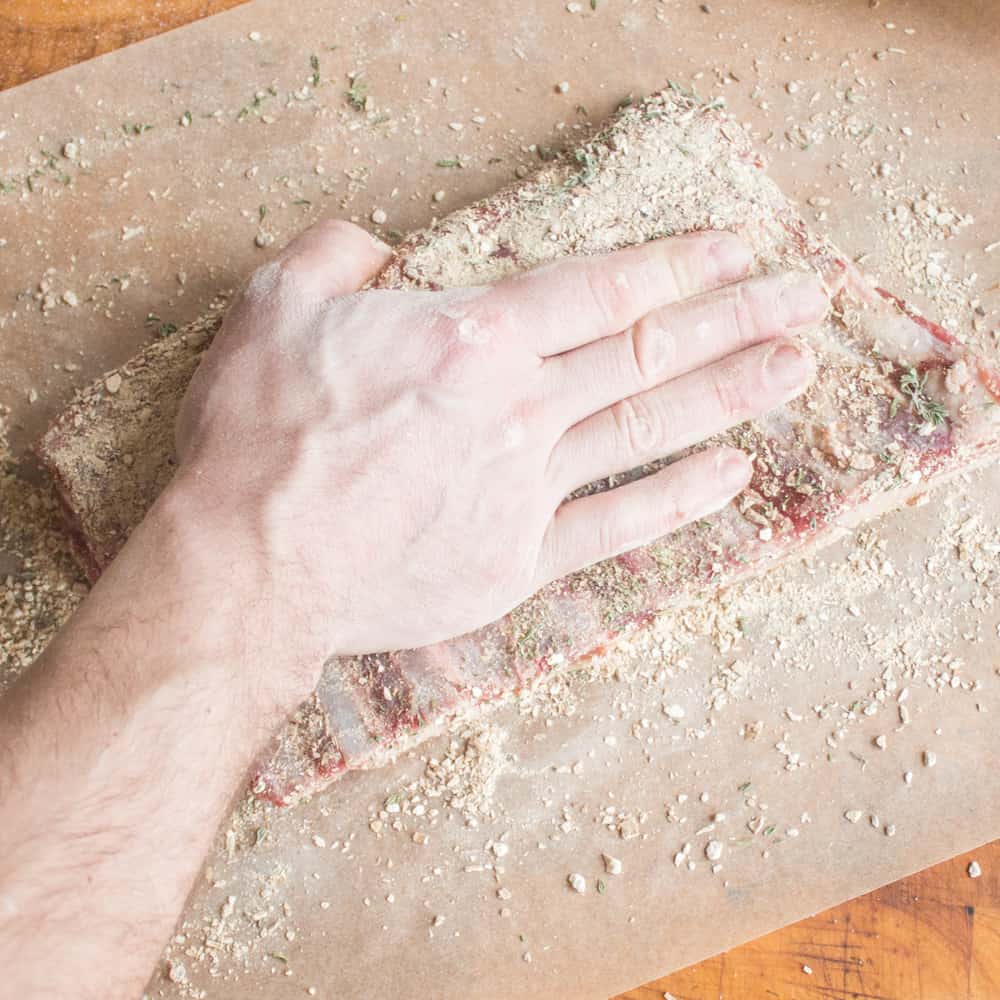
Here's the secret. Roast a regular rack of lamb, and you're going to get (hopefully) a perfectly cooked loin eye, with the meat on the bone having to be gnawed off if it hasn't been frenched (not necessarily a bad thing). Chances are, if you're buying local lamb, or lamb you raised yourself, it probably isn't frenched.
Slow cooking your rack in parchment negates any and all differences in the way the meat cooks and eats, at the same time rendering the rib fat to a crispy nubbin that falls off the bone like some pot roast of the gods. It's one of the best ways to cook a rack of lamb.
The only drawback is that it isn't as pretty as a regular rack, which, depending on the eaters you're expecting, might not be a bad thing at all--it's going to taste amazing, and that's the most important part, isn't it?
But, to unlock an additional meat cooking skill medal, and present the lamb as pictured with some cheffy flair,, you can chill the cooked roast afterwords, which will firm it up and allow you to cut the cleanest, easiest slices possible. From there, all you have to do is gently reheat each slice in a pan or the oven, and serve.
When I served this one, it went nicely with a pan sauce made from the fat and drippings, some wilted spinach, toasted garlic slices and chanterelle conserve that I warm up in and brown gently as I would fresh mushrooms. See the recipe notes for more variations and ideas.
More Lamb Recipes
Porcini-Crusted Rack of Lamb (Slow Roasted)
Ingredients
- 1 rack of lamb
- 1 recipe dried bolete mushroom rub
- 1 teaspoons fresh chopped thyme
- Kosher salt and fresh ground black pepper
- Parchment enough to wrap the rack of lamb
Instructions
- Using a paring knife, remove the half-moon shaped piece of cartiledge from the end of the loin nearest the shoulder, then score the fat just deep enough to penetrate it with a cross-hatch pattern to help it render.
- Season the rack all over with salt, pepper and thyme, then place on a sheet of parchment large enough to wrap it up into a package. Apply the bolete mushroom rub, turning the rack over in the powder to help it adhere.
- Put the rack bone-side down on the parchment, then sprinkle any remaining mushroom powder over the top. The amount of mushroom rub should seem excessive, but will help form the delicious crust you want.
- Wrap the meat in parchment, tying the ends closed to make a package, and refrigerate overnight (optional). To cook the rack of lamb, bake the packet in a pan to catch the fat for 4 hours at 250 degrees, from here you can serve the lamb, although it will be messy. I like to chill to make perfect slices easy, and then reheat when needed.
- Make a pan sauce from the drippings (optional)
Notes
- Pork ribs
- Beef chuck roast (heavily marbled and fatty)
- Leg of lamb
- Roast chicken (cook at 300F)
- Pork shoulder

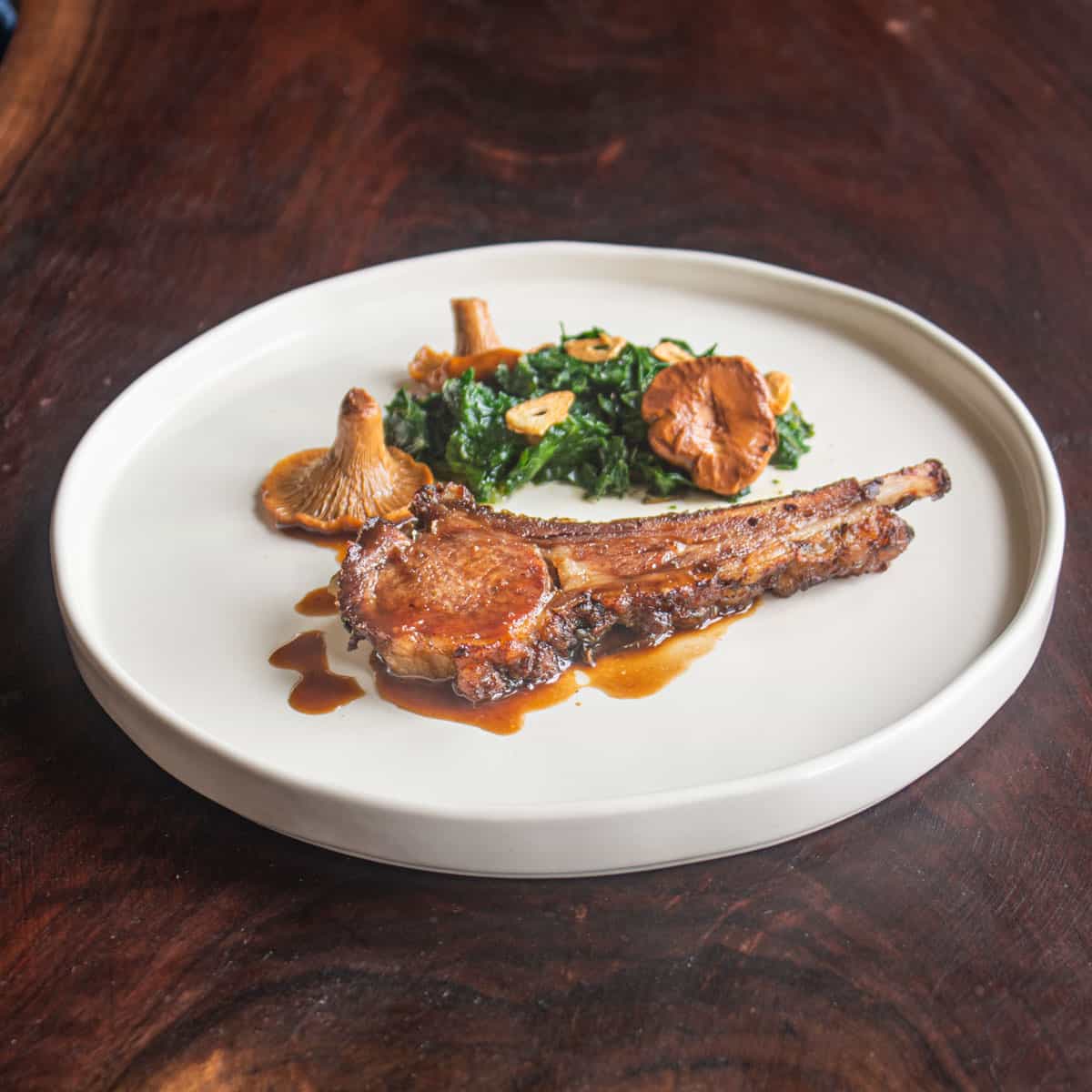
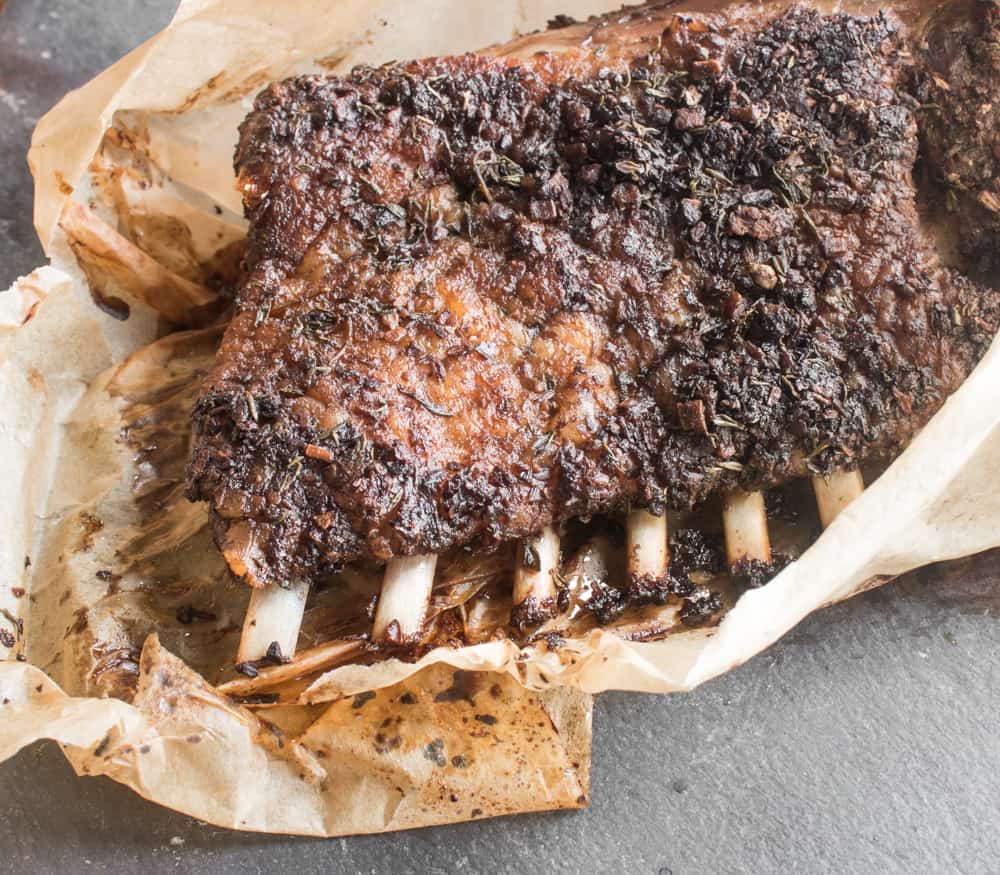
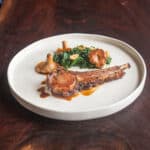
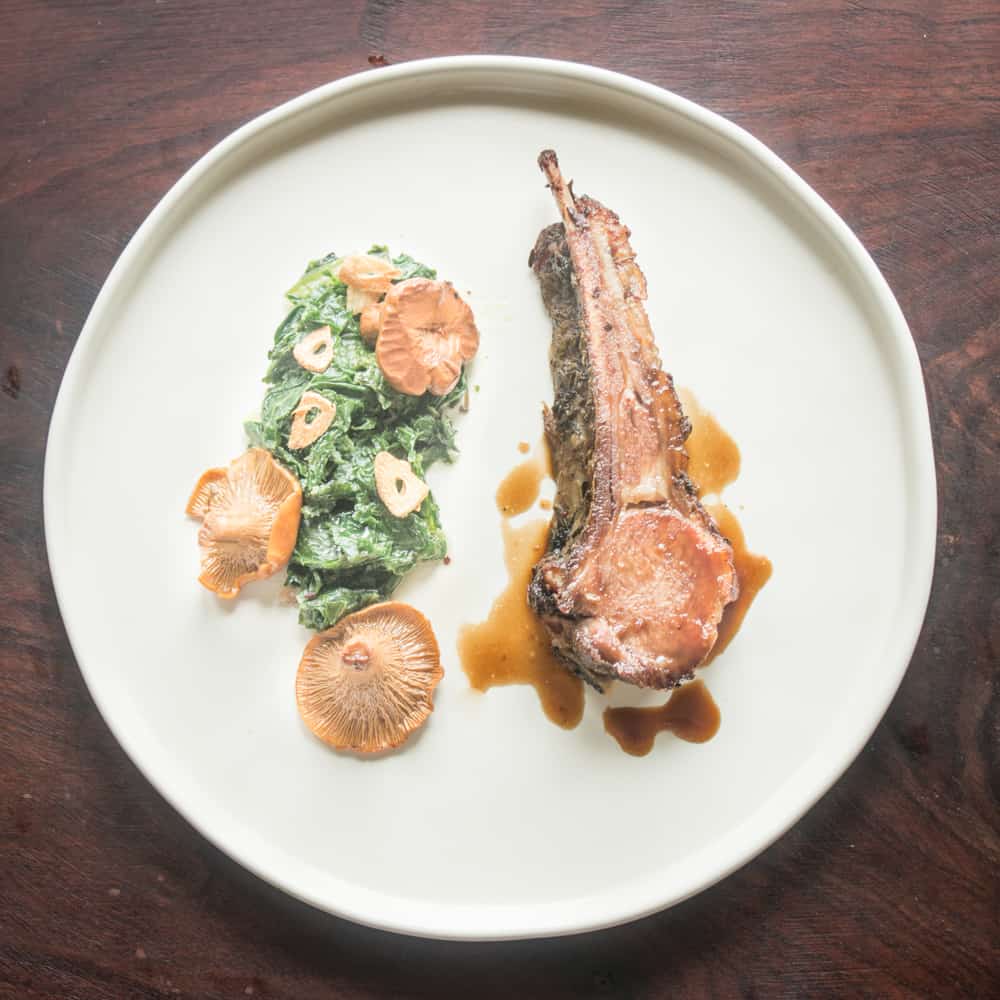
Jenny G
I must admit that I was a bit dubious to slow-cook a rack of lamb, but the results were delicious. Even my family member who likes neither mushrooms nor coffee said it was ‘really good’ and ‘thanks for making dinner, mom’.’ It’s definitely a keeper.
I couldn’t tell when to use the black pepper and fresh thyme from the recipe text - just mixed it in to the rub.
Alan Bergo
Glad it worked for you Jenny.